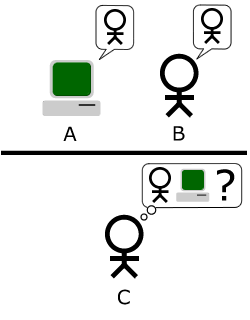History of Computers - Turing Test

Introduction
Developed by Alan Turing in 1950, the Turing Test evaluates the ability of a machine to demonstrate intelligent behavior similar to or indistinguishable from a human.
Overview
In the 1940s, the field of artificial intelligence was just emerging, and Alan Turing and his contemporaries were beginning to evaluate machine intelligence. Turing had been thinking about machine intelligence since at least 1941, and he is among the first to have mentioned “computer intelligence.” Turing first introduced the test in his paper “Computing Machinery and Intelligence,” where he opened by proposing the question of whether computers could think. In his paper, he moved from that question to the less ambiguous inquiry of whether computers can imitate human behavior.
To try and answer whether machines are able to act as humans, Turing proposed a series of scenarios, including the Imitation Game, in which a man and a woman in separate rooms from the rest of the players pretend to be each other to confuse those who are trying to guess their identities, only the man or the woman is replaced by a machine. In the original Turing Test, a human evaluator would converse with both another person and a machine. All participants in the Test are separated from one another, and conversations are limited to keyboard and computer screen or something similar so as not to judge based on a computer’s ability to sound like human speech. A machine is said to have passed the Turing Test if a human evaluator cannot reliably distinguish the machine from the human.
Significance
The kinds of questions associated with the Turing Test have philosophical roots which date back to Descartes’ Discourses on Method in which the author explores the duality of mind and body and states that machines cannot be capable of a human response to stimuli. Since Turing introduced his test in the 1950s, it has become a cornerstone in the philosophy of artificial intelligence, both highly influential and widely criticized.
Turing’s ideas on testing artificial intelligence were foundational steps towards technology such as ELIZA, which appeared to pass a Turing Test, and CAPTCHA, which is used online today to confirm that someone is not a machine. The Turing Test has also received criticism, including John Searle’s thought experiment known as the Chinese Room. This thought experiment introduces a distinction between manipulating symbols and understanding and ultimately concludes that the Turing Test is not able to prove that a machine can think.
References
http://www.turing.org.uk/scrapbook/test.html
http://www.psych.utoronto.ca/users/reingold/courses/ai/turing.html
http://www.loebner.net/Prizef/TuringArticle.html